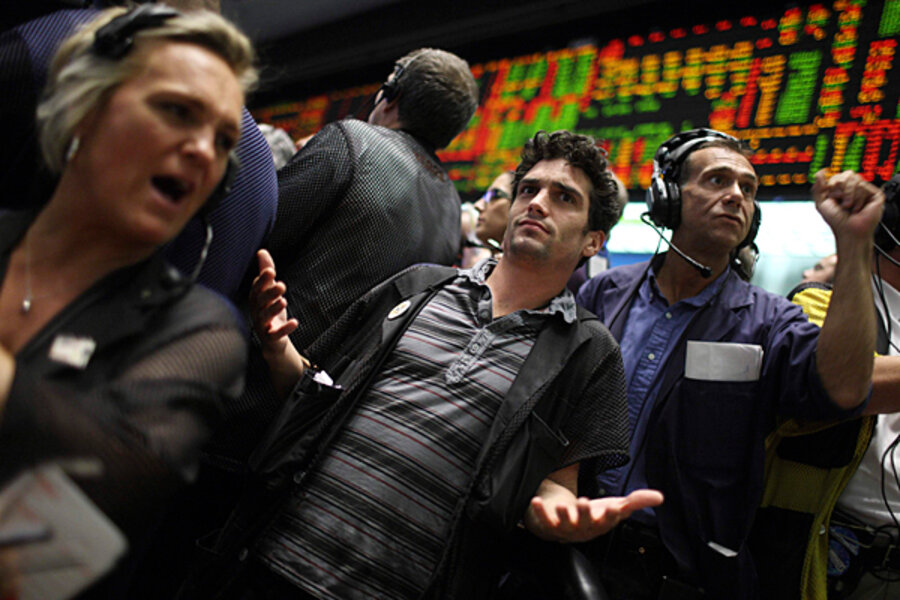What Federal Reserve did to boost weak economic recovery
Loading...
The Federal Reserve's policy committee took action Tuesday designed to counter signs of weakness in the US economy.
With the Fed's short-term interest rate already set near zero percent, purchasing securities are one of the few tools by which the central bank can give the economy an added monetary boost. On Tuesday, the Treasury committed to start buying securities again, albeit in a limited way.
The move came as the Fed acknowledged that a nascent economic recovery had lost some important momentum.
"The pace of recovery in output and employment has slowed in recent months," the Fed's Open Market Committee said in a statement after meeting in Washington. "Bank lending has continued to contract," businesses are reluctant to hire, and consumers are constrained by the weak job market and declines in home values, it said.
The economy's cooling trend has emerged just as the Fed had begun to back off from buying mortgage-related securities as part of an emergency economic-recovery policy. Those bond purchases were designed to keep mortgage rates low, aiding the troubled housing market.
Now, as those securities reach maturity and are paid out, Treasury will replace them by buying Treasury bonds. The goal is for Treasury to maintain $2 trillion in assets. The Fed decided Tuesday that it didn't feel comfortable letting this asset pool start to shrink over time, which would have happened if it had taken no action. Letting the asset pool shrink would have effectively resulted in the Fed taking money out of the economy.
The policy committee isn't pushing the panic button, though. It hasn't yet decided to expand its balance sheet further.
One member of the committee cast a dissenting vote on the policy and the accompanying statement. That was Thomas Hoenig, president of the Fed's regional bank in Kansas City.
Congress has given the Fed a mandate to seek both stability in consumer prices and full employment. The latest readings of the consumer price index suggest that deflation may be a greater risk now than inflation, although deflation is not yet occurring in a persistent way.
The risk is that if deflation arises, it could make consumers less likely to spend (as they expect further price declines), businesses less likely to invest, and borrowers less able to pay their debts.
That, coupled with the high unemployment rate, has tilted Fed policymakers toward taking new steps to coax the recovery forward.
"Should the economy not respond to the action taken by the Fed over the past two months, the [policy committee] could entertain an outright increase in the size of its balance sheet of several hundred billion dollars at the September or November meetings," economist Brian Bethune of IHS Global Insight wrote in a report after the Fed's announcement.





